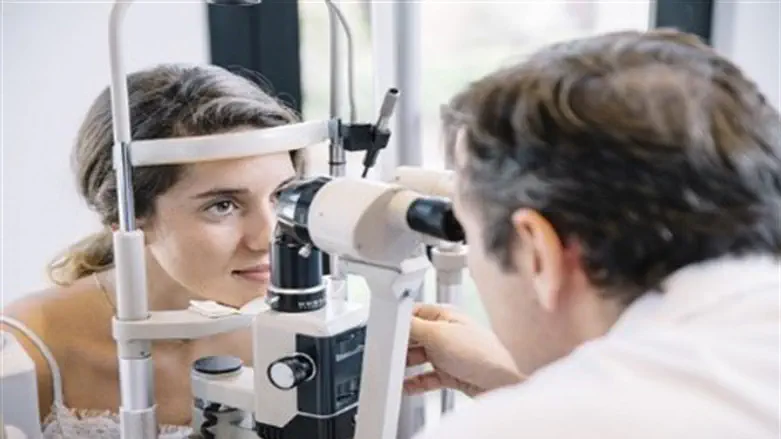
Laser eye surgery: Safety in the most successful surgery in medicine
Tens of thousands of Israelis have performed laser-eye surgery in recent years. The considerations that lead them include aesthetic improvement, daily comfort and long-term financial savings. Today, with new technology and skilled surgeons, this level of safety close to 100% is maintained.
Thirty-five years after the revolutionary introduction of laser-eye removal surgery to our lives and millions of surgeries later on, medicine has ample evidence of the extraordinary efficacy and safety of these surgeries.
Compatibility Examinations in laser eye surgery
Ensuring the efficacy and safety of eyeglasses removal surgery begins long before the surgery itself in the correct selection of patients. This selection is done by means of a thorough and complex examination that includes eye photography and topographic scan examination of the cornea, vision examination done by an optometrist and a full eye examination by doctor, which is an expert ophthalmologist.
As part of the examination of the ophthalmologist, the candidate's overall health status is fully assessed. They also map the cornea and measure the thickness of the cornea, examine the pupil expansion, the eyeball, the bottom of the eye, the optic nerve, and measure the intraocular pressure.
Based on these tests, the ophthalmologist decides whether the candidate is suitable for laser eye surgery and the method of surgery that best suits him. 30% of the patients are not suitable for the operation and are not operated on.

Ensuring eye recognition and preventing infections in eyeglass surgery
In the course of the operation, the patients receive antibiotic drops that will prevent infection of the eye. This measure, along with the use of advanced technologies and sterile equipment, brings the percentage of infections after laser eye surgery to close to zero.
Advanced devices will photograph the iris at the beginning of the operation, compare it with the scans from the date of the Compatibility Examinations, and make sure that the surgical plan matches the operated eye. This technology prevents the possibility that a surgeon will undergo an operation that is not the operation that was adapted for him in the Compatibility Examinations. The technology is able to distinguish between the eyes of the same patient, so that the surgery intended for the left eye and vice versa will not be performed on the right eye.
The course of surgery and neutralizing the effect of eye movements
Laser surgery involves two separate stages: first, a laser beam construct and hook in the cornea, and in the second stage, the surface under the suspension is polished with a different laser device.
In both stages, it is very important that the laser beams are precisely guided to the exact area of the operation.
This is done by continuous imaging of the eye during the surgery, the absorption of minimally and involuntarily movements by the Eye Tracker and the direction of the laser beams so that the movements will not affect it.
The most advanced devices in the world are capable of real-time monitoring of eye movement in 7 dimensions and to adjust the angles of the laser beams according to all dimensions in real time. such a device, Amaris 1050RS of the German company Schwind, is owned by the 'ENAIM' net of medical centers and is more advanced than other devices that track the eye in a smaller number of dimensions.
The relationship between the number of laser pulses and the safety of the operation
The longer the laser is able to send many rays, the less time it takes to complete the surgery and the probability of complications and side effects decreases. Currently the highest laser frequency device in the world is the Amaris 1050RS. The device, which is used in the 'ENAIM DR. LEVINGER' medical center, can send about 1000 rays per second and correct myopia of 8-diopter in just 12 seconds. This feature reduces the risk of eye dryness and enables the intensity of the pulse to be adjusted to reduce peripheral damage in the surgical area.
The scarcity of long-term effects
Dr. Shmuel Levinger, the medical manager of the 'ENAIM' network of eyeglasses removal surgeries, explains the side effects: "In Israel, there is no known case of blindness due to eyeglass surgery. Usually, immediately after surgery, the patient will feel the dramatic improvement in vision and will be able to continue his life with almost no side effects. In the postoperative days, when the suspension is fully and perfectly replaced, it is advisable to avoid rubbing the eye or sport exercising that can damage the healing process of the hook.
The most common side effect of the surgery is eye dryness, which will be felt by 50% -20% of the patients. Dry eye treatment is simple and includes eye drops at a reduced dose until a break of one month after surgery. "
In addition to eye dryness, patients can see halos and be dazed for days or weeks after surgery. These side effects also tend to disappear naturally within a short period.
In conclusion, safety and laser eye surgery is exceptional in the medical field.
With the introduction of new technologies in recent years, the frequency of complications in refractive surgery has declined even further. The compatibility examination also affect the safety of laser eye surgery when the examinations prior the procedure conducted in a professional clinic can ensure optimal fit of the surgery to patients on their way to independence desired from glasses or lenses.
The HMOs recognize the importance of the glasses removal surgery in light of the growing demand and great success, and participate in funding the surgery
